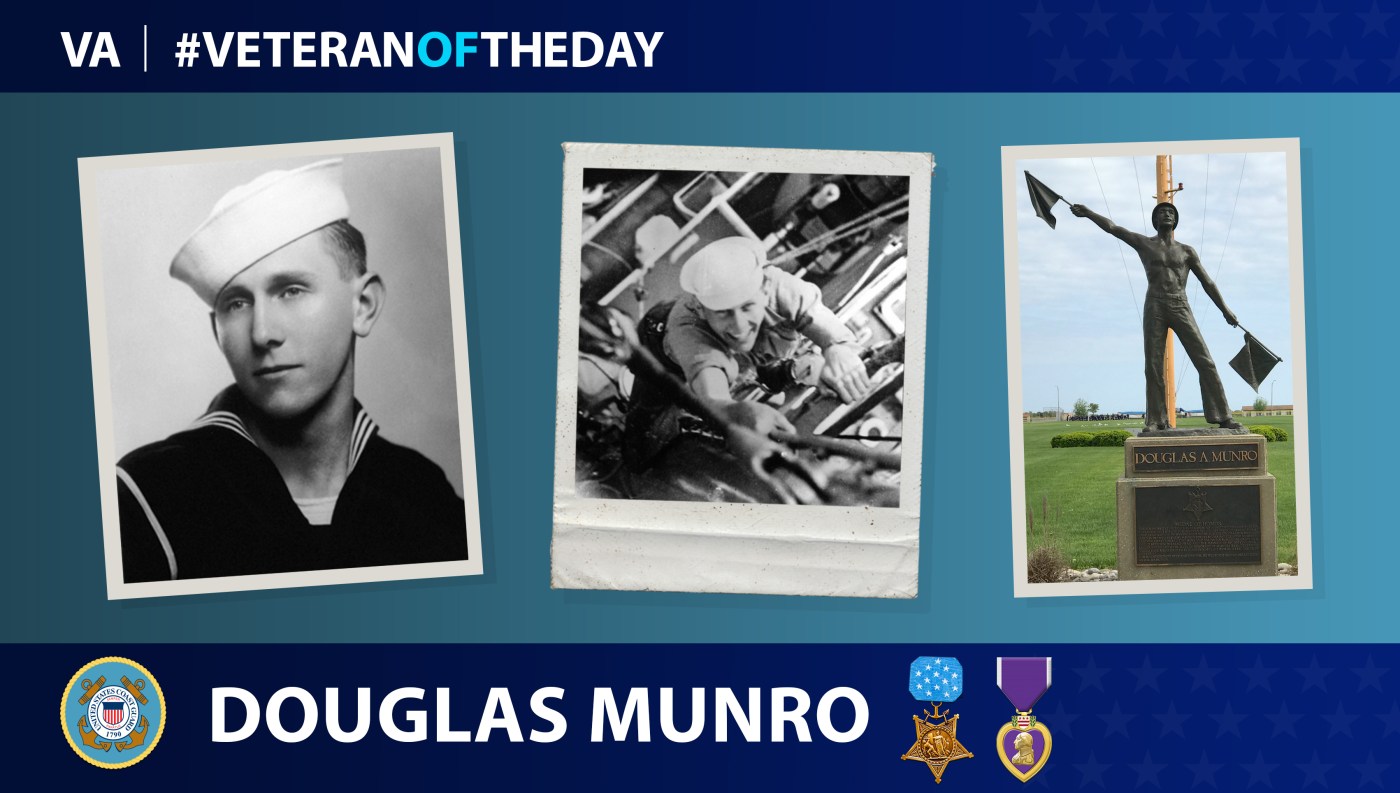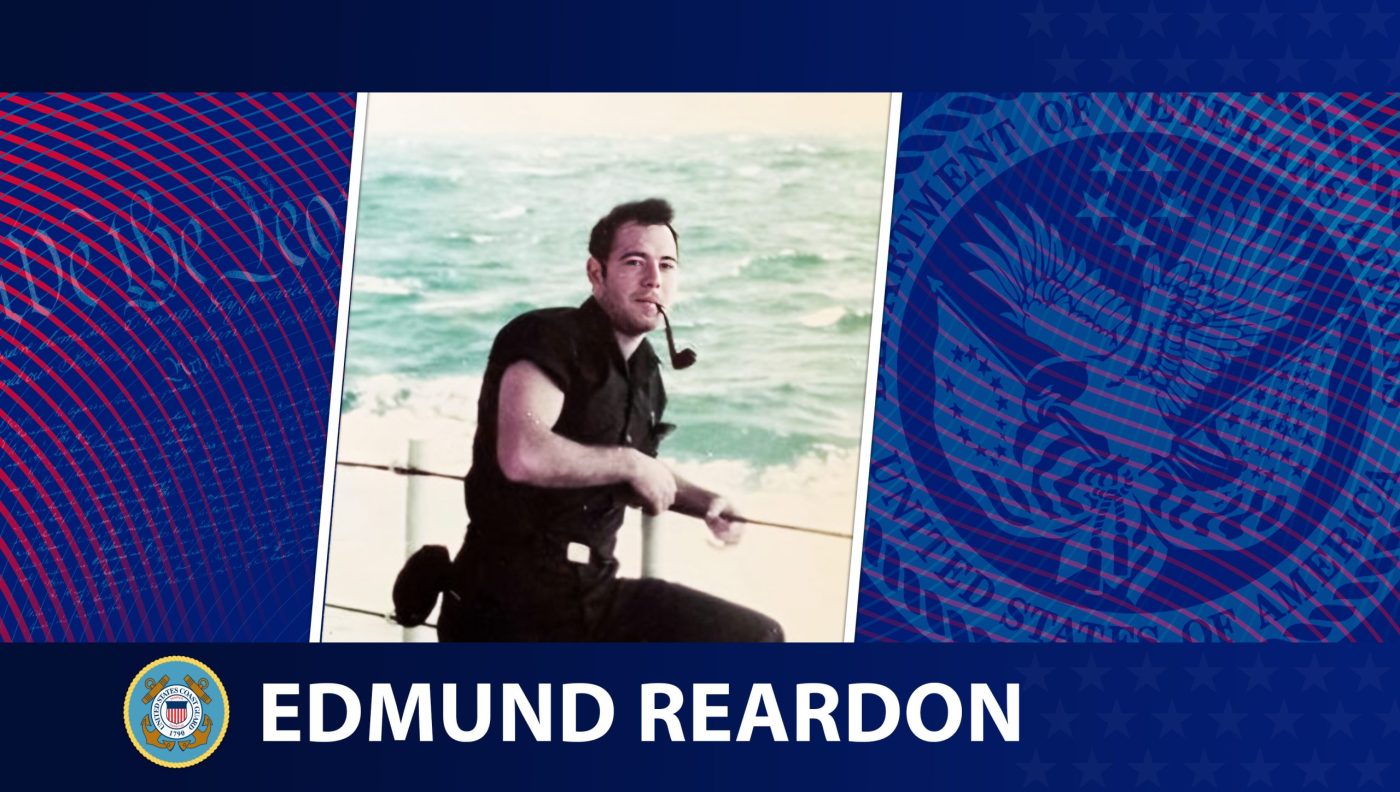
On the Coast Guard birthday, Today’s #VeteranOfTheDay is Coast Guard Veteran Douglas Albert Munro, the service’s only Medal of Honor recipient.
Douglas Albert Munro was born in Vancouver, British Columbia in Canada, but grew up in South Cle Elum, Washington. He attended the Central Washington College of Education in Ellensburg for one year before enlisting in the Coast Guard in 1939. After attended basic training at Port Angeles, Washington, Munro joined the crew of the USCG Cutter Spencer at Base Staten Island, New York. Munro served on the USCGC Spencer until November 1941.
In November 1941, Munro requested transfer to the attack transport ship USCGC Hunter Liggett, stationed at Brooklyn Army Base. In April 1942, the USCGC Hunter Liggett shipped out and arrived at the Solomon Islands in August.
Munro landed on Tulagi Island with the assault forces in early August 1942. He later served on Lunga Point Base in northern Guadalcanal, a staging area for troop movements along the coast and supply distribution.
On Sept. 27, 1942, Munro was among the first sent to Point Cruz near the Matanikau River to drive out the Japanese forces there. Munro led a group of 10 Higgins boats to Point Cruz, but after returning to Lung Point, he learned Japanese forces trapped the Marines. Munro volunteered to return to Point Cruz to evacuate the Marine companies, despite his Higgins boat unsuitable for combat.
Under heavy artillery fire from the Japanese, Munro led five Higgins boats back to the beaches to rescue the Marines. Four of the boats successfully transported the waiting Marines to safety but during the last evacuation, the fifth Higgins boat came under heavy fire and was could not safely disembark. Munro maneuvered his boat to shield the remaining Marines from gunfire as they boarded. In doing so, Munro died by machine gun fire. He was buried on Sept. 28 on Guadalcanal.
In October 1942, Munro posthumously received a Medal of Honor and Purple Heart. President Franklin D. Roosevelt presented the medals to Munro’s family in May 1943.
After the war, Munro’s remains were brought back to the United States. He was reburied with honors in 1948 at the Laurel Hill Memorial Park in Cle Elum, Washington. The Coast Guard named three ships in his honor: USCGCs Munro, Douglas Munro and the USS Douglas A. Munro. A statue of Munro resides at the Cape May Coast Guard Training Center in Cape May, New Jersey. The Munro Building at the Coast Guard Headquarters in Washington D.C. and Munro Hall at the U.S. Coast Guard Academy in New London, Connecticut are also named after him.
We honor his service.
Nominate a Veteran for #VeteranOfTheDay
Do you want to light up the face of a special Veteran? Have you been wondering how to tell your Veteran they are special to you? VA’s #VeteranOfTheDay social media feature is an opportunity to highlight your Veteran and his/her service.
It’s easy to nominate a Veteran. All it takes is an email to newmedia@va.gov with as much information as you can put together, along with some good photos. Visit our blog post about nominating to learn how to create the best submission.
Contributors
Writer: Sarah Concepcion
Editor: Barbie Carranza
Fact checker:
Topics in this story
More Stories
This week’s Honoring Veterans Spotlight honors the service of Army Veteran Harry R. Truman, who served in Europe.
This week’s Honoring Veterans Spotlight honors the service of U.S. Coast Guard Veteran Edmund Reardon, who served in Seattle and New York.
This week’s Honoring Veterans Spotlight honors the service of Army Veteran and legendary MLB player and broadcaster Bob Uecker.







Please look up Herminio Carrero Suarez Jr. for his bravery during the Korean Conflict because his service to his Country whereby Puerto Rico became associated to the United States and whereby it should not be a 51 State because his daughter is an independent and Operation Bootstrap is Whereby Puerto Rico became associated… But courageously, and willingly he fought anyway. Children grow up and We Never Want War anyway!